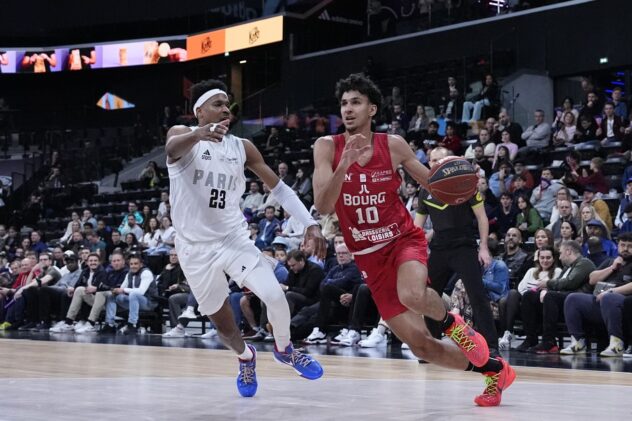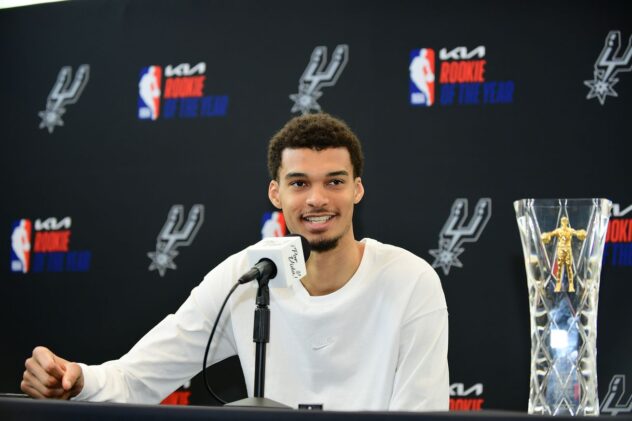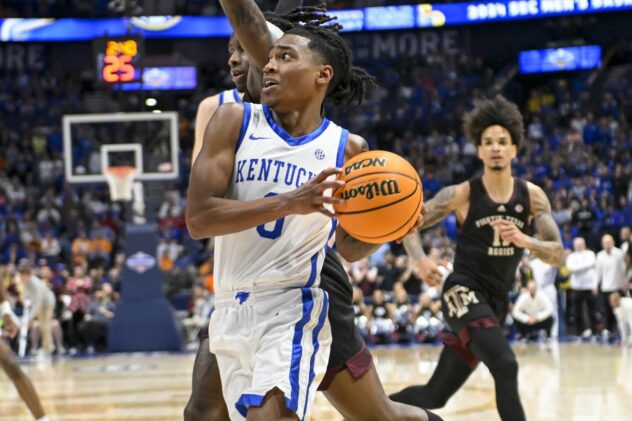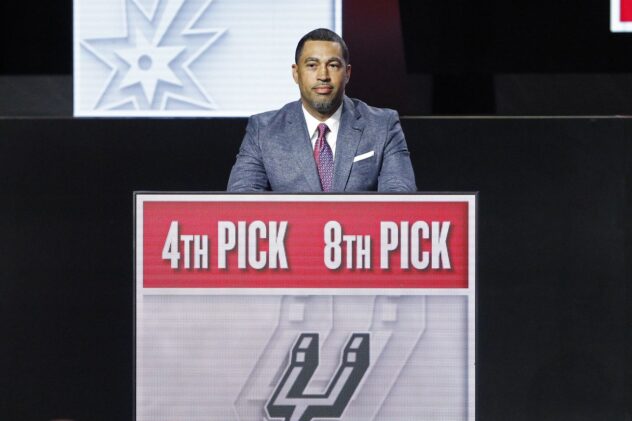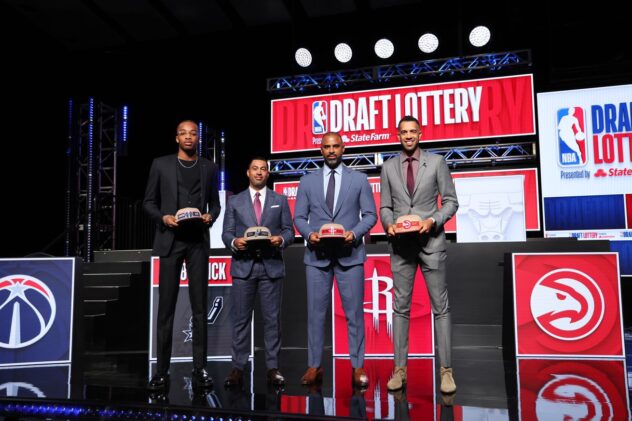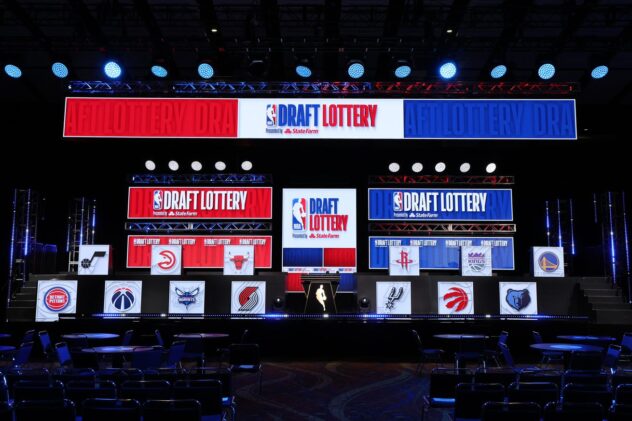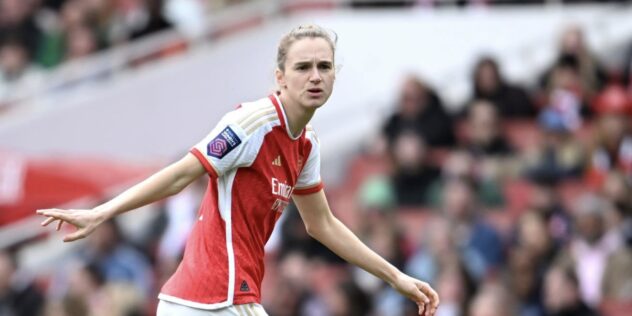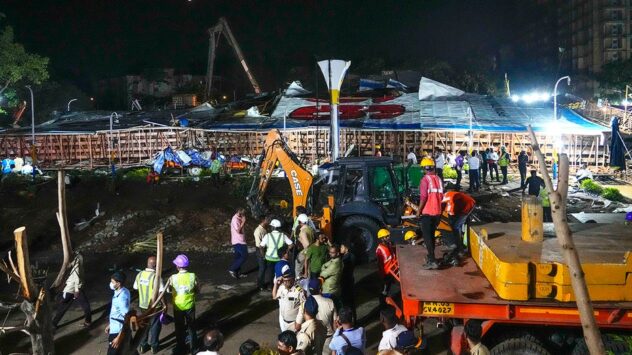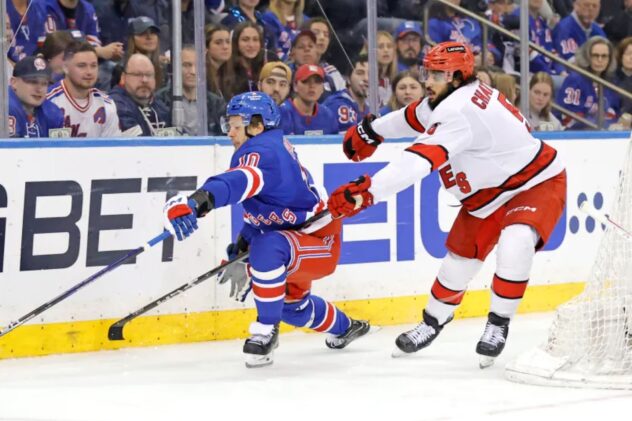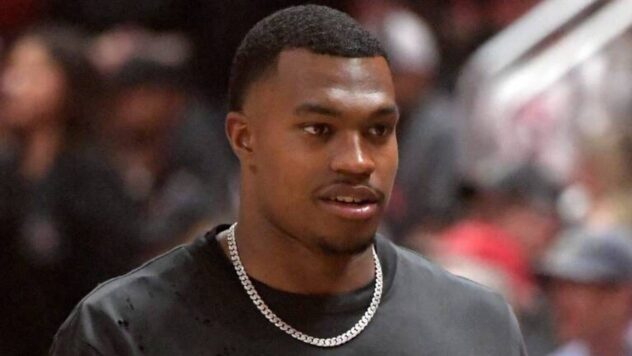What Doug McDermott’s injury means for the Spurs

It took 68 games, but the Spurs finally suffered their first “major” injury of the season in Saturday’s loss to the Pacers when starting power forward Doug McDermott landed on Oshae Brissett’s foot and suffered a grade 3 ankle sprain. (That’s the worst type of sprain and can sometimes take longer than a broken bone to fully heal.) It was then announced on Wednesday that he would miss the remainder of the season as the team is fighting for its playin life. While it would be an overstatement to say this is a massive loss for the Spurs, it’s the implications McDermott’s absence has on the rest of roster — and what it reveals — that can’t be understated.
For the most part, McDermott has been a neutral presence on the court, providing outside shooting and off-the-ball movement for a starting unit that can go stagnant at times, but his defense is a liability against teams with respectable forwards. None of that is surprising — it fits his scouting report to a tee — and in an ideal world he would be coming off the bench, providing offense for a second unit that lacks any true scoring power beyond Lonnie Walker, but therein lies the problem.
McDermott has been the Spurs’ starting power forward because he’s all they have at the position other than Keita Bates-Diop and Dovantae Cacok, the former who was a two-way player as recently last year, and the latter was a two-way player for most of this season until he was converted to a standard NBA contract just two weeks ago. Suffice it to say, while KBD (when healthy) has provided solid minutes off the bench for the Spurs when called upon, neither are anything close to starting-caliber NBA forwards. Zach Collins and Jock Landale have the shooting range to fill in at power forward in a pinch, but they aren’t ideal fits next to Jakob Poeltl (not to mention neither were healthy to start the season), which has left the job to McDermott.
Now, with McDermott out and Bates-Diop dealing with back issues, the Spurs are left with little choice but to play four guards/swingman around a big at all times, meaning someone is almost always dealing with a huge size mismatch on defense. Even if the Spurs have several individually good guard/wing defenders in Dejounte Murray, Devin Vassell, Keldon Johnson and Josh Richardson, all are too small to guard the post or be expected to cover traditional NBA forwards. The Spurs were already having trouble with larger players, and now that issue will only be exacerbated, especially because their solution is to double-team, but rotations behind that double-team are often slow or even nonexistent, frequently leaving an open shooter out on the perimeter.
The good news is that on the other end of the court, the Spurs have the offensive fire power deal with McDermott’s loss. It may have been much more consequential early in the season, but thanks in large part to Johnson overcoming a slow start and turning into a reliable, 40-percent three-point shooter seemingly out of nowhere, the Spurs’ starting unit can handle McDermott’s absence on offense. Johnson’s improvement from outside means opposing defense have to respect his range, which allows him bully his way to the bucket, keeping the offense moving in a similar way that McDermott did.
Similarly, Richardson, who presumably will continue as McDermott’s starting replacement for the remainder of the season, is also an above-average outside shooter, defender, and brings a level of movement and energy that can be contagious. In large part because the Spurs can now replace his offense, losing McDermott isn’t the end-all for this season. They will probably be roughly the same team without him, and whether or not they make the playin will likely be just as much in the hands of the teams around them as their own.
However, what his absence does show is how fragile and shorthanded the Spurs are at the forward positions — and really have been since the Kawhi Leonard trade — and it’s a sign of what they need focus on this offseason. The only forward they have drafted in the first round since 2014 is Luka Samanic, and he didn’t pan out. With three potential first round picks, including one in the lottery, hopefully they can make some noise at the forward positions either with one of those picks, with a draft night trade, or in free agency.
Now is the time for the Spurs to think big, because constantly having four players 6’5” or shorter on the court isn’t going to take them to the next level, especially when none are true MVP candidates (yet). Just about every championship contender has a star in the front court nowadays, so it’s time for the Spurs to start looking for theirs.

